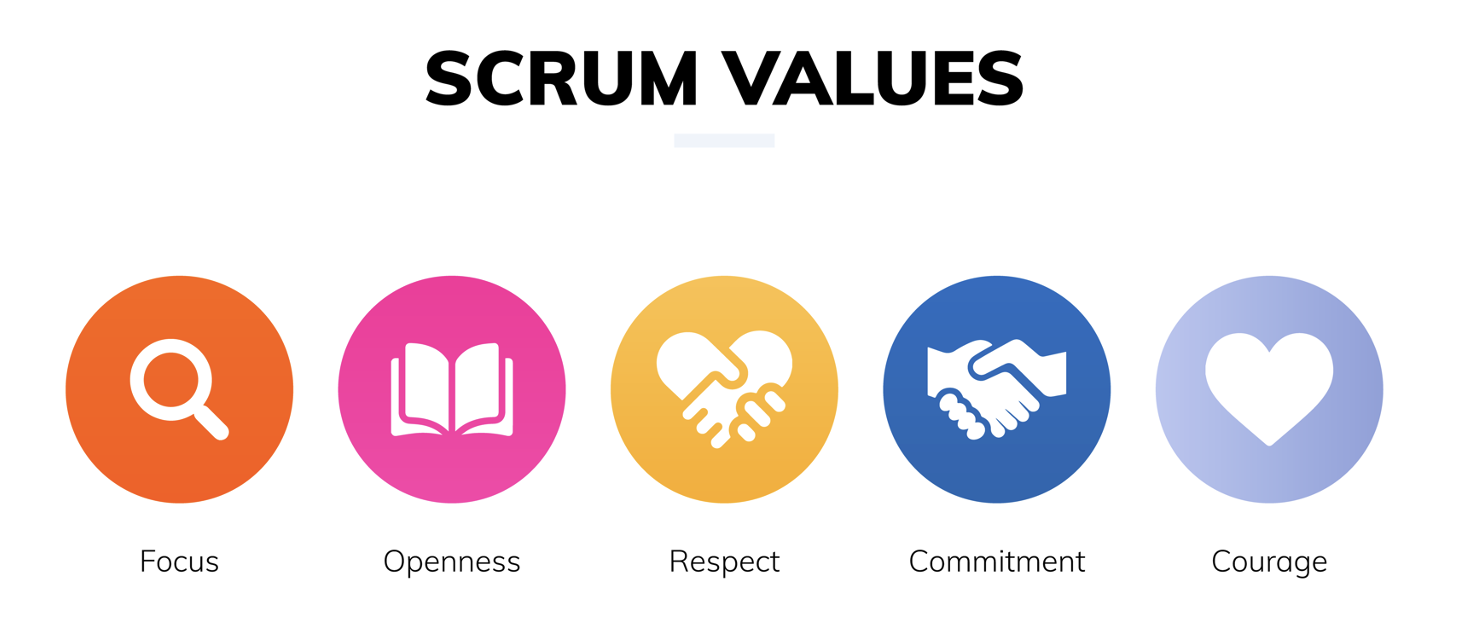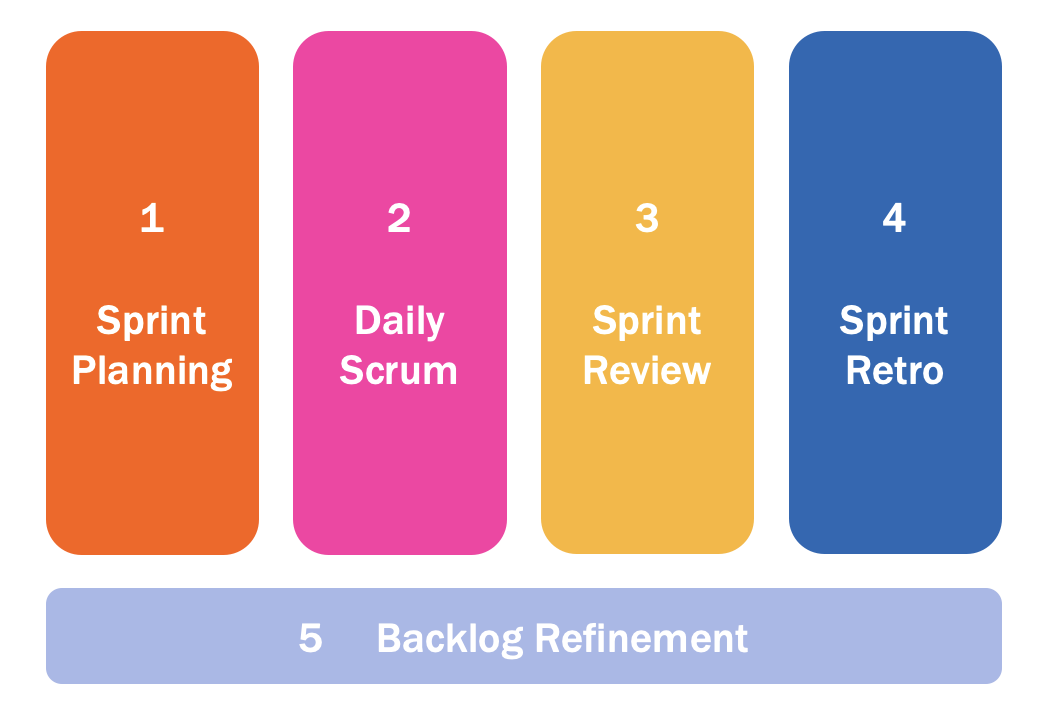Agile in The Data Mine
The Data Mine uses Scrum, an Agile framework, for its project management and software development practices. On this page, we’ll review what Agile and Scrum look like in The Data Mine, and more specifically, what role mentors play in scrum teams in The Data Mine. For our full trainings on Agile and Scrum, refer to our training resources that all students take when term starts.

How the Merck teams use Agile
Recording from July 18, 2022 - Summer Mentor Meeting Series
Dr. Terri Bui shares her insights on using Agile in The Data Mine.
Artifacts
All teams are encouraged to use scrum artifacts to guide their project development. The three main scrum artifacts that The Data Mine uses are the product backlog, sprint backlog, and increment. See below for detailed definitions.

The mentor’s main responsibilities pertain to the product backlog and the increment. Specifically, mentors should be directly involved in managing and maintaining the product backlog (your TA will also help with this). Mentors have the best understanding of which direction the project should move so their involvement on the product backlog is crucial for guiding the students.
Mentors are also involved with the increment. They will provide feedback on the increment and decide if sprint backlog tasks are officially completed or if they will need to rollover to the next sprint.
Important Definitions: Artifacts
Product Backlog: the primary list of work that needs to be accomplished
Sprint Backlog: the list of tasks or items that the development team pulls from the product backlog to complete during a sprint
Increment: the usable end-product from a sprint, also known as the sprint goal
Ceremonies
Scrum ceremonies offer a consistent schedule for mentors, TAs, and students to follow. Teams should stick to a repetitive sprint schedule with three key ceremonies: sprint planning, sprint reviews, and sprint retrospectives. See below for sample sprint schedules and important definitions.

Mentors are directly involved with the sprint planning process. TAs will lead the sprint planning meetings, but mentors are present to provide guidance on what tasks to prioritize during the sprint.
During sprint reviews, students will present their project updates. Mentors are to give feedback on their work and their presentations skills.
Sample Schedules
Mentor Meetings on Monday, Lab on Friday
Monday |
Tuesday |
Wednesday |
Thursday |
Friday |
Mentor Meeting: Sprint Planning |
Lab: Open Development Time |
|||
Mentor Meeting: Sprint Review |
Lab: Sprint Retrospective and Open Development Time |
Mentor Meetings on Tuesday, Lab on Tuesday
Monday |
Tuesday |
Wednesday |
Thursday |
Friday |
Mentor Meeting: Sprint Planning |
Lab: Open Development Time |
|||
Mentor Meeting: Sprint Review |
Lab: Sprint Retrospective and Open Development Time |
Mentor Meetings on Fridays, Lab on Mondays
Monday |
Tuesday |
Wednesday |
Thursday |
Friday |
Lab: Sprint Retrospective and Open Development Time |
Mentor Meeting: Sprint Planning |
|||
Lab: Open Development Time |
Mentor Meeting: Sprint Review |
Mentor Meetings on Thursdays, Lab on Tuesdays
Monday |
Tuesday |
Wednesday |
Thursday |
Friday |
Lab: Sprint Retrospective and Open Development Time |
Mentor Meeting: Sprint Planning |
|||
Lab: Open Development Time |
Mentor Meeting: Sprint Review |
Important Definitions: Ceremonies
Sprint: the time period where the scrum team works together to accomplish their increment
Sprint Planning: meeting time spent planning for the upcoming sprint including task ownership and increment decisions
Daily Scrums: short (5-15 minute), daily check ins where each team member speaks very briefly on what they are working on and notify the team of any blockers they are facing
Sprint Review: a meeting held towards the end of a sprint to demo the increment and reorganize the product backlog
Sprint Retrospective: a meeting with the scrum team spent reflecting on what went well during the previous sprint and what can be improved upon for next sprint
Roles
To clarify roles within a project team, it is helpful to consider your team a scrum team, broken into three main roles: product owner, scrum master, and development team.

Corporate partner mentors take on the role of product owner because of their direct connection to the business. They are the leader of a project and will be the decision maker for project scope and direction.
Important Definitions: Roles
Product Owner: expert of the product, have a focused understanding of consumer needs, domain applications, and business specifications
Scrum Master: expert of scrum, leader of any scrum effort within a scrum team including trainings, performing scrum ceremonies, and removing inefficiencies
Development Team: experts on project development, deep expertise on applications for the product and will deploy their knowledge together to accomplish sprint increments